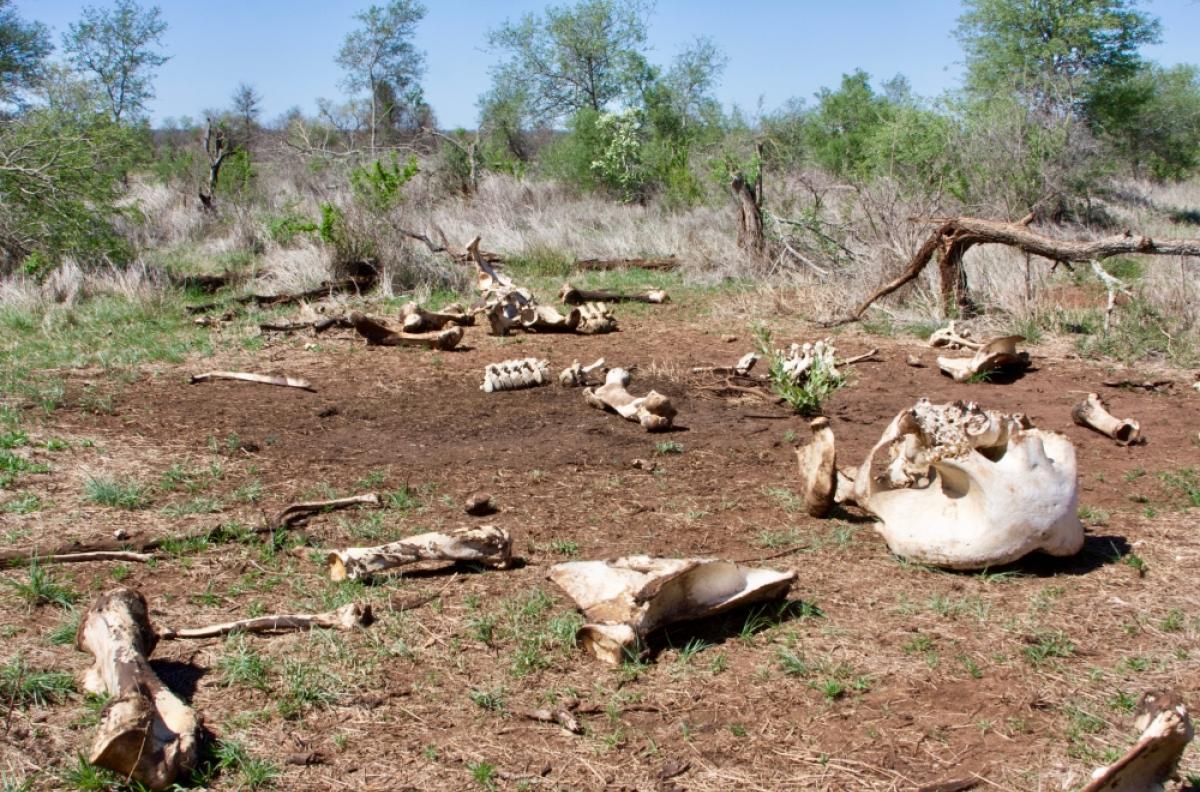
An elephant carcass in Kruger National Park. The bare area of soil was created by carcass decomposition and disturbance from scavengers. Photo Credit: Deron Burkepile
Big animals have a big impact on the environment. Whales, elephants, bison: They’re the movers and shakers of their ecosystems. But what happens when they die?
An international team of researchers, led by professors at UC Santa Barbara, will investigate how these animals’ carcasses affect their ecosystems. With a three-year grant totaling more than $1.3 million, they will survey Kruger National Park in South Africa, studying the impact of elephant carcasses on the landscape.
“People focus on the role of big animals in ecosystems for obvious reasons. But almost everybody focuses on the role these animals play while they’re alive; their role once they’re dead is really underappreciated,” said Deron Burkepile, an ecology professor at UC Santa Barbara and the project’s principal investigator.
Kruger National Park is about the area of Massachusetts, and among the largest reserves in Africa. Rangers patrol sections of the park and record elephant carcasses, marking the locations with GPS coordinates. They’ve amassed around 30 years of data so far.
In summer 2022, the research team will survey the park by helicopter with the goal of finding 50 carcasses of varying ages in areas with different rain patterns and soil regimes. They’ll begin collecting data the following year to build up their understanding of the communities and conditions around an elephant carcass.